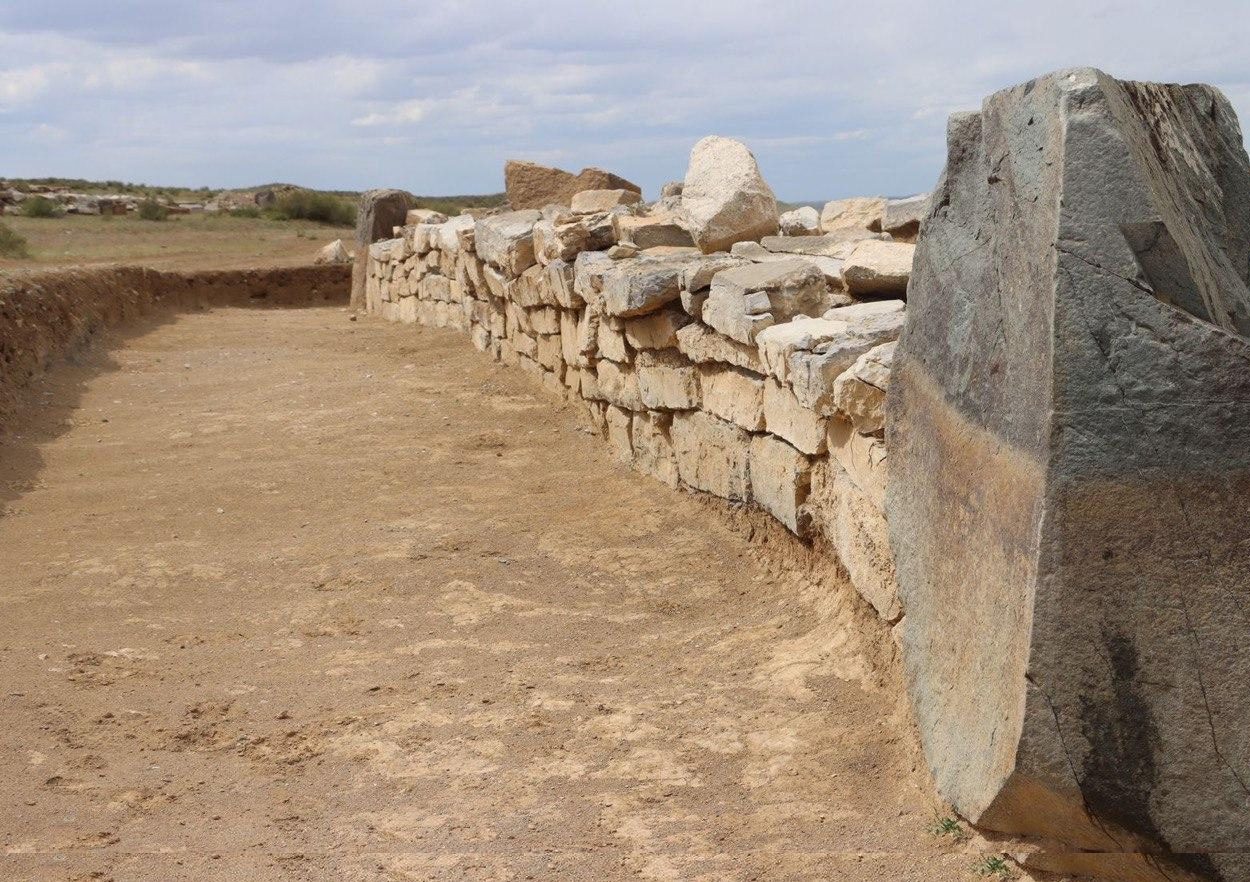Archaeologists from the Eurasian National University (ENU) have uncovered a pyramidal structure at the Kyrykungir archaeological site.
Kyrykungir is a funerary complex near the village of Toktamys, located in the Abay region of Kazakhstan.
Previous excavations since 2014 have identified clusters of burial mounds from the Hun and Saka periods, containing funerary deposits of ceramic vessels, food offerings, and bronze beads.
In a press announcement by the Eurasian National University, archaeologists have uncovered evidence of a hexagonal pyramidal that dates from the early Bronze Age around 2,000 BC.
“The pyramid is built with great precision,” said Ulan Umitkaliyev, from ENU’s archaeology and ethnology department. “It is a very sophisticated and complex structure.”
According to the researchers, the structure is hexagonal in shape, with each of the six sides measuring 12.8 metres in length. In the interior are several circular features, while the exterior walls show images of animals, in particular depictions of horses.
Excavations also uncovered ceramics, gold earrings and various items of jewellery. The discovery of horse bones around the structure suggest that it was associated with a horse cult, an important animal deified by the people that inhabited the Eurasian steppe.
Header Image Credit : Eurasian National University







